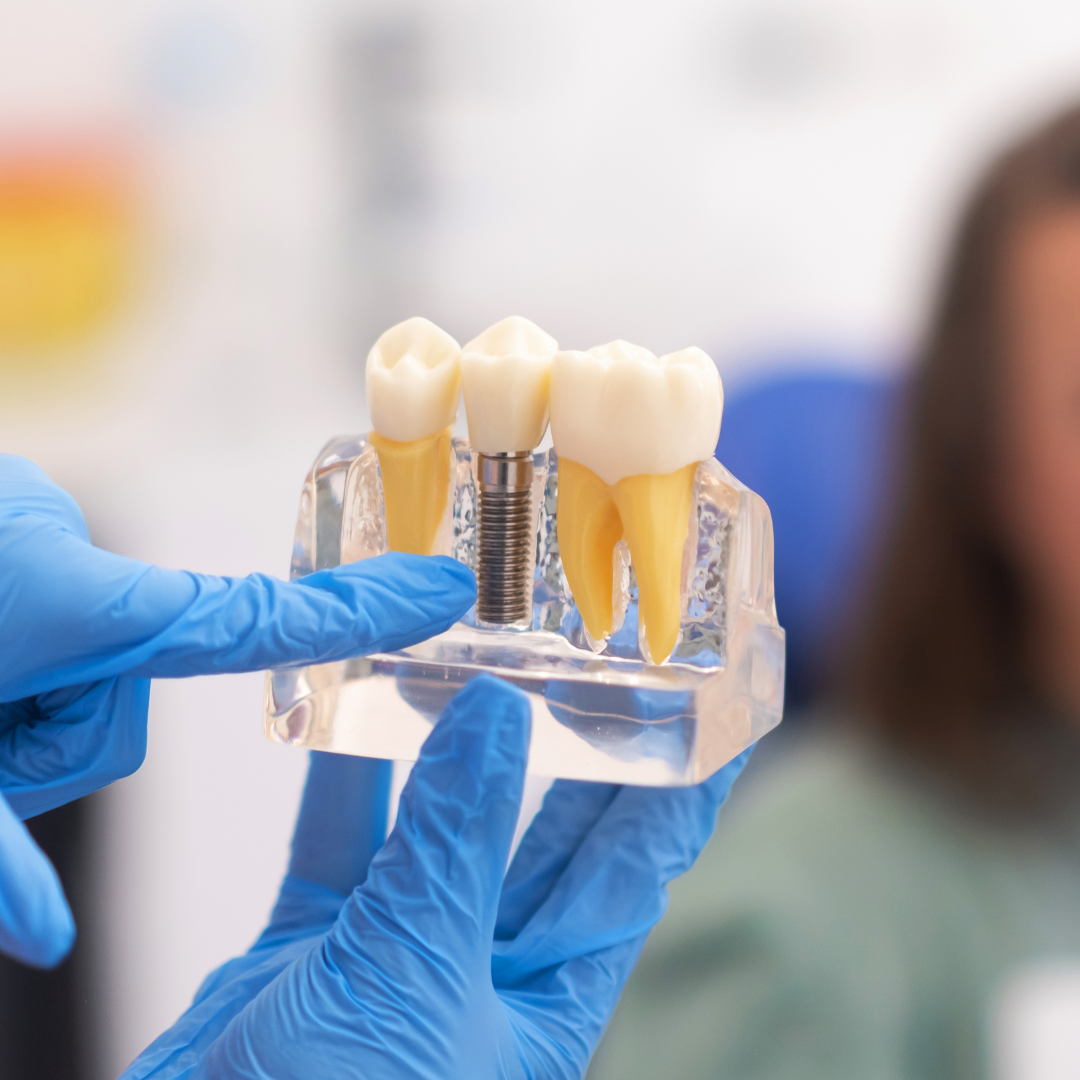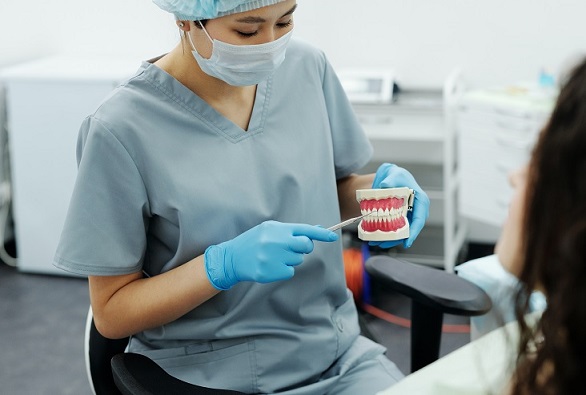The Future of Dental Implants: Innovations and Trends

Dental implants have wholly transformed restorative dentistry because they offer a reliable and durable solution for tooth loss. They have developed into the industry standard for tooth replacement, offering practical and cosmetic advantages. As technology advances, the future of dental implants becomes even more promising, as improvements in implant materials, surgical techniques, and digital technologies pave the way for more precise, efficient, and customised treatments. This article will look at the latest advancements in dental implants and how they are anticipated to alter how dentist Aspley fix patients’ mouths.
Understanding Dental Implants
It’s important to comprehend what dental implants are and how they function before discussing their future. A dental implant is a tiny titanium post that is surgically placed into the mandible to replace a lost tooth’s root. Once the implant has undergone osseointegration, which is the gradual integration of the implant with the surrounding bone, the restoration is completed by placing a crown, bridge, or denture on top of it.
Dental implants Perth offer a more lasting and aesthetically pleasing alternative to traditional tooth replacement solutions like bridges or dentures. Stability is provided by fusing the implant with the jawbone, which helps maintain bone density that could otherwise decline following tooth removal. Dental implants are a popular option for many people looking to replace lost teeth since they improve a person’s smile and restore function.
Key Trends Shaping the Future of Dental Implants
Recent technological developments have drastically changed the dental implant market. Procedures are becoming quicker, more accurate, and available to a wider variety of patients because of these advancements. Among the most fascinating trends are:
- 3D Printing and Personalised Implants
3D printing technology is one of the Most Groundbreaking developments in dental implantology. This technology enables the creation of highly customised dental implants tailored to each patient’s anatomy. Using digital scans of the patient’s mouth, 3D printing can produce implant components, surgical guides, and even crowns with exceptional accuracy.
Customised implants produced through 3D printing help to make the fit and reduce the need for adjustments during the healing process. Moreover, 3D printing allows dental professionals to create provisional or temporary crowns while the permanent implant is being fabricated, allowing patients to leave the clinic with a functional restoration.
- Digital Impressions and Cone Beam Computed Tomography (CBCT)
Painful materials are commonly used in conventional dental implant impressions, which can be difficult for both patients and professionals. However, since the advent of digital impressions, the technique’ accuracy and comfort have greatly improved. A more smooth implant placement process is made possible by digital scans, which enable the faster and more precise acquisition of crucial information.
Cone Beam Computed Tomography (CBCT) has also become a game-changer in dental implant planning. CBCT scans offer a 3D image of the patient’s jawbone, soft tissues, and nerve pathways, providing the dentist with a comprehensive view of the area. This enhanced visualisation allows for more accurate implant placement of the risks associated with nerve damage or sinus perforation.
- Guided Implant Placement and Computer-Assisted Surgery
Guided implant placement, driven by computer-assisted technology, is another important innovation in dental implants. Digital images and 3D scans are used to create a virtual plan for implant placement, which is then transferred to a surgical guide. This guide helps ensure that the implant is placed in the most optimal location, reducing human error and improving the overall success rate of the procedure.
Guided implant placement is particularly beneficial for patients with limited bone volume, as it allows the surgeon to navigate the complex anatomy of the area with precision. This technique also reduces trauma to the surrounding tissues, leading to quicker recovery times and less postoperative discomfort for patients.
Advancements in Implant Procedures
Along with improvements in materials and technology, the procedures involved in dental implant placement have also evolved. These innovations have made minimally invasive techniques, faster recovery times, and more predictable outcomes possible.
- Immediate Implant Placement
In the past, patients who underwent tooth extraction would need to wait several months for the bone to heal before an implant could be placed. However, with advances in implant materials and surgical techniques, immediate implant placement is now a feasible option for many patients. This technique allows the dental implant to be placed right after tooth extraction, reducing the overall treatment time and the number of procedures needed.
Immediate implant placement offers several advantages, including quicker function restoration and a more streamlined treatment plan. However, not all patients are candidates for this approach, and the dentist must carefully assess them.
- Bone Grafting and Regenerative Techniques
Patients may not have sufficient bone volume to support a dental implant. In these situations, bone grafting is required to provide a solid foundation for the implant. Recent advancements in regenerative techniques have made bone grafting more effective, using new biomaterials and growth factors to stimulate bone regeneration.
Techniques such as sinus lifts and guided bone regeneration are increasingly used to address bone loss in the upper jaw, allowing more patients to qualify for dental implants.
- Minimally Invasive Surgery
Minimally invasive dental implant surgery has become increasingly popular due to its benefits, including smaller incisions, reduced trauma to surrounding tissues, and quicker recovery times. Using advanced surgical tools, laser technology, and precise computer-assisted planning, dental professionals can now place implants with less disruption to the patient’s mouth, leading to less pain and faster healing.
These techniques result in less postoperative swelling and discomfort, allowing patients to return to regular routines more quickly.
The Future of Dental Implants: What Lies Ahead?
As we look toward the future, the potential for innovation in dental implants is limitless. Here are some exciting possibilities:
- Artificial Intelligence (AI) in Implant Planning: AI could be used to predict the optimal placement of implants, further enhancing the precision of procedures and improving patient outcomes.
- Innovative Implants: Future implants could have sensors that track the condition of the implant and the surrounding bone, giving patients and dentists real-time information to warn of any problems.
- Regenerative Medicine: Bone grafts may ultimately be unnecessary thanks to tissue engineering and stem cell research, which would enable the bone around the implant to naturally regenerate.
- Improved Materials: The creation of even more biocompatible implants might result from ongoing advances in materials science, which would increase their long-term success rate and lower their risk of problems.
Conclusion
It is expected that new developments in dental implants would enhance the overall functionality, looks, and experience of replacing lost teeth. The next generation of dental implants promises to provide patients even more tailored and effective solutions because of developments in digital technology, 3D printing, materials, and surgical methods.
Dental implants will continue to be the gold standard in restorative dentistry as these technologies develop, providing a stable, long-term option for those seeking to regain confidence and smiles.



